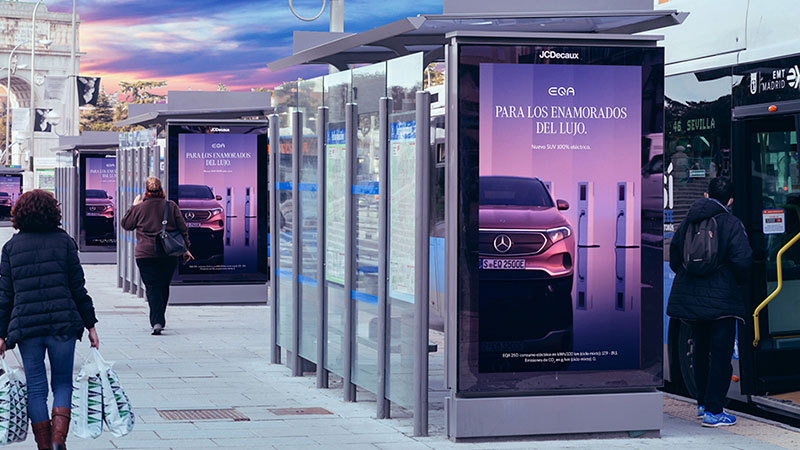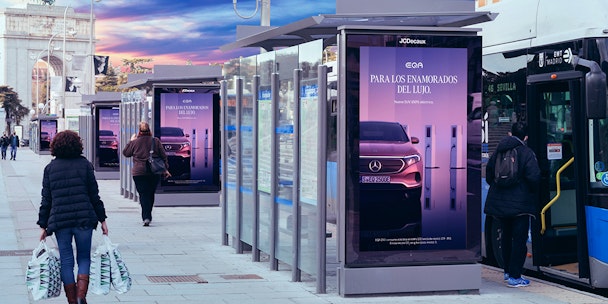
Marketers and agencies yet to wake up to the power of programmatic DOOH are missing out on a vital tactic to hit both brand and performance objectives – here’s why.

With tighter budgets and challenging circumstances, marketers are under increased pressure to make every dollar they spend count
The age-old brand versus demand dilemma is one that marketers grapple with constantly. Where should I place my cards; do I always have to sacrifice one for the other? What if there was a way to deliver on both: create lasting brand capital and achieve key performance metrics.
Enter programmatic digital out-of-home (prDOOH) – which has been shown to deliver on both brand awareness and performance metrics. If marketers and agencies haven’t yet woken up to the power of prDOOH, then they are missing out – and no one wants FOMO.
The fear of missing out (FOMO) is very real in advertising circles. Every brand marketer wants to be the first to do something, or at least be among the first to achieve success in a new channel or with new technology, benefiting from getting in early before the competition catches on, driving up pricing.
“The best time to start buying prDOOH was two years ago, the second-best time is now,” says Dom Kozak, head of programmatic, JCDecaux UK. “We’ve seen a huge jump in the number of brands investing in prDOOH this year and it’s driving up the level of competition. The challenge many media buyers face isn’t how to plan or activate, it’s deciding where prDOOH fits in the media mix because it’s so versatile. Delaying that decision results in missed opportunities.”
With tighter budgets and challenging circumstances, marketers are under increased pressure to make every dollar they spend count. Following a tumultuous period, including the impact of a global pandemic, changes in the privacy arena and third-party cookie deprecation on the horizon, marketers are looking for the next big thing to help them navigate this changing digital world.
“In 2023, the value of brands will be much higher, as people will have to make choices between where they choose to spend their money,” says Kozak. “That puts a great emphasis on brand equity and the importance of bringing brand into the more established programmatic digital ecosystem.”
The out-of-home (OOH) space has come a long way in the last few years. In the past year alone, JCDecaux UK reports a 226% increase in programmatic revenue to date, serving 1,958 different creatives for 232 brands across 21 demand-side platforms. The attraction for brands being a format that is 100% viewable, privacy-first, and a brand safe environment to find their audiences.
When New Look was looking to increase brand awareness and footfall in-store and online for the launch of its A/W collection, a partnership with Hivestack, JCDecaux and Kepler allowed the fashion retailer to deliver against four key audience groups targeted on DOOH screens using programmatic technology. The campaign led to a 63% increase for in-store visits and 67% lift across its competitors.
The clever combination of creativity and contextually relevant data is not just unlocking both new and existing audiences, but the ability of prDOOH to connect with other media channels is proving to be a valuable tool in the omnichannel marketing mix.
For decades OOH has been a substantial part of Marks and Spencer’s media plans providing scale and impact. Those same benefits were important, but the brand was looking to deliver it in a much more targeted, relevant, measurable, efficient and creative way – showing the customer what they were interested in while converting that into a sale as quickly as possible.
Re-igniting its OOH advertising post-lockdowns, M&S teamed up with Mindshare and JCDecaux to develop a prDOOH strategy as part of a multichannel approach to ensure that it was reaching people in a consistent way in and out of their homes and via public and private screens. Leveraging its product feeds, creative and delivery was automatically adjusted based on local stock levels and sales data, delivering 15.4 million impacts nationally across the UK, with the Sightline activity proving 64% more effective at reaching the target audience versus a natural delivery.
“Going forward, we’re looking at how we can use prDOOH to enable us to be representative of Britain in our creative and reflect that across the country,” says Luisa Lee, head of marketing, trade planning and media, M&S. “As a brand we have a responsibility to show up in a way that resonates with everybody everywhere. PrDOOH is going to enable us to do that.”
For online payment method provider Klarna, an always-on, six-month non-guaranteed deal in Germany across street furniture during the pandemic afforded maximum flexibility for the brand. It was able to target specific groups with creative content that frequently changed to grab the attention of audiences. What’s more, it could be stopped and reactivated based on mobility numbers. The result: 55 million impressions and a +50% increase in contact across the target group, with the multichannel campaign resulting in +42% increase in brand recognition for Klarna.
But there’s a misconception that prDOOH doesn’t have a home within specialist teams. Which team is responsible? Where does the budget come from? How do we fill the knowledge gap? Buying DOOH programmatically is super easy, efficient and flexible. And it’s easy to do within existing demand-side platforms (DSPs), which speak a language that they are already familiar with.
“We’ve seen a massive resurgence of context in 2022, as digital advertisers look for full funnel cookieless solutions. DOOH already does a great job at that,” says Kozak. “The difference now is that DOOH is more accessible than ever before. You don’t have to have previous experience in OOH to be able to run amazing campaigns. And the technology partners have done a great job of simplifying the workflows too, so you don’t need years of programmatic trading knowledge either.
“Adding DOOH into the media mix to complement other channels while being able to optimize creative and targeting based on first-party data is helping to close that loop for advertisers and create the online and offline synergy to ensure that you are reaching the right person, at the right time, in the right place.”
Utilizing its own first-party customer data, Mercedes-Benz was able to build a national campaign across major cities in Spain with a data-driven strategy, using programmatic to drive flexibility and efficiency to optimize delivery. Working with JCDecaux, AMQ and The Trade Desk, Mercedes-Benz built an effective profile for strategic targeting and efficient planning to drive a +30% above average impact – with 37% of the targeted audiences approaching concessionaries of the brand.
With 2023 fast approaching, the battle for consumer attention will only become greater. prDOOH could just be the vital missing tool in a marketer’s arsenal to deliver throughout the brand funnel and connect the dots from awareness to consideration to conversion.
The best part is, it’s nothing new. It’s taking all the benefits of OOH and just pulling new levers for new ways to activate. Don’t wait around for others to get there first. With 2023 just around the corner, start testing and exploring the potential of this marketing tactic now to get ahead.